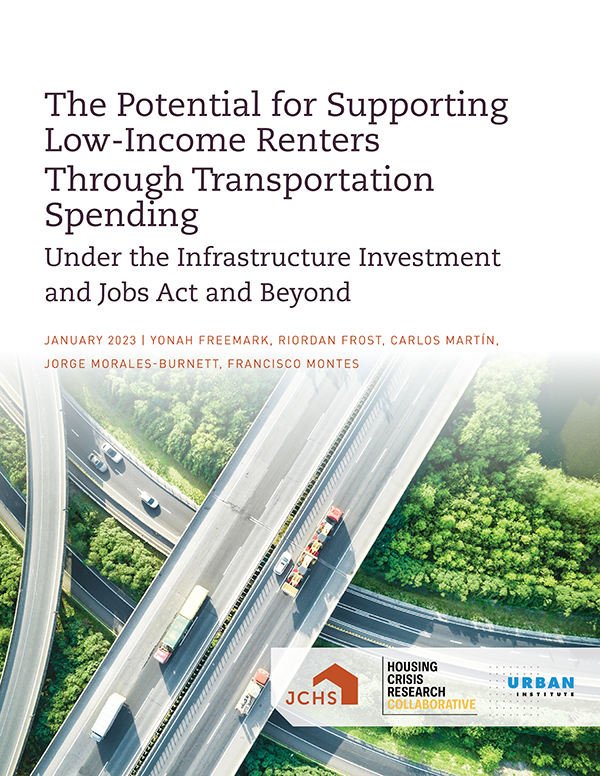The Potential for Supporting Low-Income Renters Through Transportation Spending Under the Infrastructure Investment and Jobs Act and Beyond
The 2021 Infrastructure Investment and Jobs Act (IIJA) is the largest single investment in the United States' public works in decades. Over the next five years, it will fund thousands of investments in transportation and energy among several systems nationwide. Despite the IIJA’s potential to upgrade these elements of the country’s infrastructure, the appropriations noticeably overlook housing. The Harvard Joint Center for Housing Studies and the Urban Institute convened a workshop of stakeholders and policymakers in Fall 2022 to identify the mechanisms that might leverage the law’s sizeable transportation investments for affordable housing’s preservation, development, and access. Stakeholders explored three fundamental interventions to this end:
- Technical assistance that integrates housing and transportation. The US Department of Transportation (DOT) could assist state and local officials in creating long-term relationships with housing counterparts to develop Housing Coordination Plans in the context of short- and long-term metropolitan transportation plans. This step would equip DOT’s regional staff with the resources and access to expert guidance that would build local capacities for linking transportation and housing funds, for shared planning activities, and for jointly addressing land use and development barriers.
- Rigorous housing criteria in competitive transportation grants. DOT could mandate in its proposal requests that applications support additional housing availability, improve housing affordability, and prevent displacement. Review criteria and point schema could then reflect those priorities. DOT could also prioritize applications with explicit support from housing providers.
- Baseline requirements that formula transportation funds do no housing harm. DOT could consider placing a moratorium on transportation projects that disproportionately impact communities in ways that do not affirmatively further fair housing goals or preserve affordable housing stock without appropriate restitution. DOT could hold up as models the state offices and projects that use IIJA formula funds for positive and fair housing production.
Examples of innovation in applying these interventions are likely over the next half-decade. However, successful innovations will require a sober understanding of statutory constraints and implementation challenges. This paper frames opportunities for further exploration with the goal of providing ongoing guidance to policymakers and advocates seeking to integrate housing with transportation investments.

